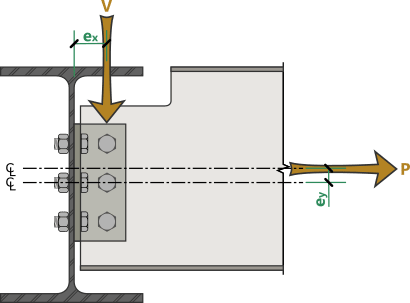I am designing a double angle connection between a floorbeam and a girder web on a bridge. The floorbeam is coped, has a 6.5" eccentricity to 15 bolts 3/4" A992 bolts spaced at 3", and has a load of 308 kips at the girder. I am having some trouble coming up with the required strength, T. Can I extrapolate T from the moment created by the eccentric point load? Would I even need to account for the prying action in this case?
Tek-Tips is the largest IT community on the Internet today!
Members share and learn making Tek-Tips Forums the best source of peer-reviewed technical information on the Internet!
-
Congratulations cowski on being selected by the Eng-Tips community for having the most helpful posts in the forums last week. Way to Go!
Prying Action - Floorbeam to Girder Double Angle Connection
- Thread starter CalebA
- Start date

